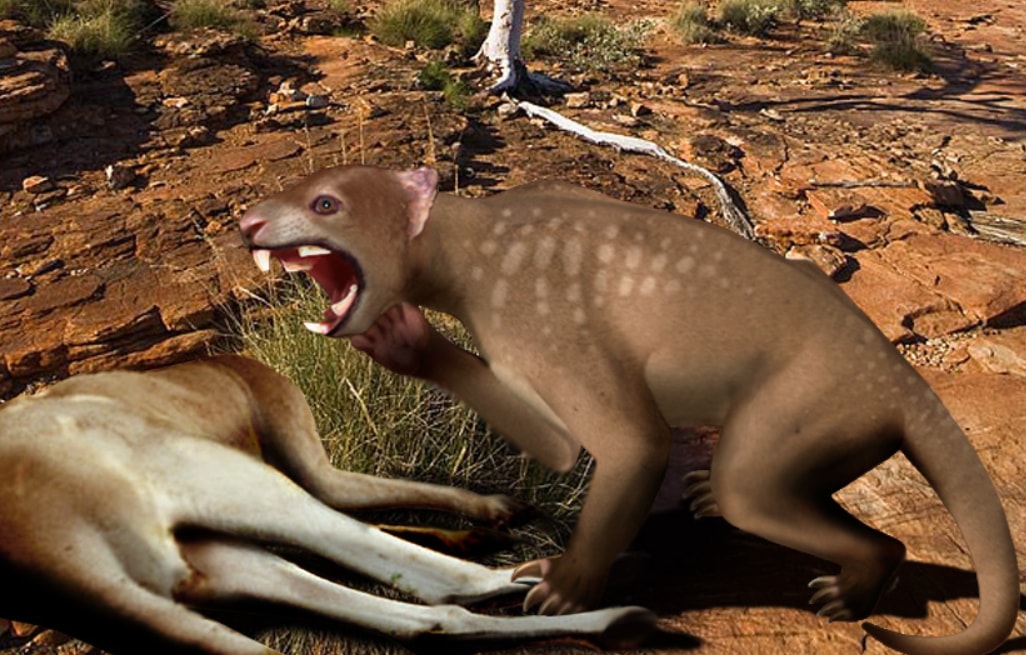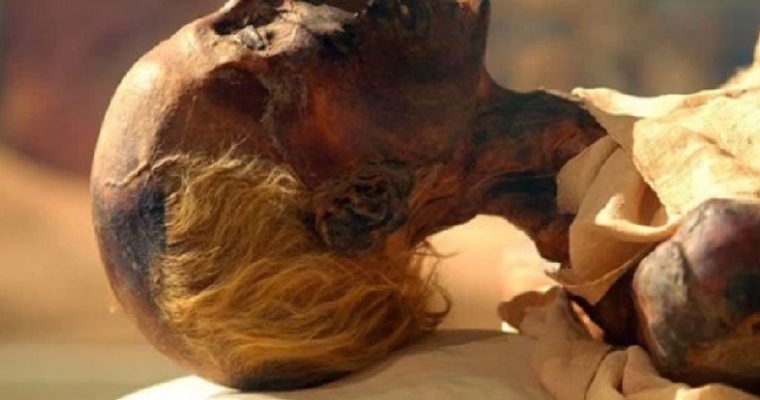Paleontologists have discovered a new species of carnivorous marsupial lion that lived 26 to 18 million years ago (late Oligocene to early Miocene) in Australia’s rainforests.

Reconstruction of Wakaleo schouteni challenging the thylacinid Nimbacinus dicksoni over a kangaroo carcass in the late Oligocene forest at Riversleigh, Australia. Image credit: Peter Schouten.
The newly-discovered marsupial lion, named Wakaleo schouteni, was the size of a dog and weighed around 23 kg.
The species was about a 1/5th of the weight of the largest and last surviving marsupial lion, Thylacoleo carnifex, that weighed in at 130 kg and which has been extinct for 30,000 years.

“The identification of this species has brought to light a level of marsupial lion diversity that was quite unexpected and suggest even deeper origins for the family Thylacoleonidae,” said Dr. Anna Gillespie, a paleontologist at the University of New South Wales, Australia.
The fossilized remains of Wakaleo schouteni — a near-complete skull, teeth, and humerus (upper arm bone) — were found in the Riversleigh World Heritage Area of remote north-western Queensland.

“With the new find, we believe that two different species of marsupial lions were present in the late Oligocene at least 25 million years ago,” the paleontologists said.

“The other, originally named Priscileo pitikantensis, but renamed Wakaleo pitikantensis, was slightly smaller and was identified from teeth and limb bones discovered near Lake Pitikanta in South Australia in 1961.”
The new species exhibits many skull and dental features of the genus Wakaleo, but it also shared a number of similarities with Priscileo pitikantensis — particularly the presence of three upper premolars and four molars, previously the diagnostic feature of Priscileo.
Further similarities of the teeth and humerus which are shared with Wakaleo schouteni indicate that Priscileo pitikantensis is a species of Wakaleo.

“These dental similarities distinguish Wakaleo schouteni and Priscileo pitikantensis from later species of this genus, all of which show premolar and molar reduction, and suggest that they are the most primitive members of the genus.”
“This latest finding raises new questions about the evolutionary relationships of marsupial lions,” Dr. Gillespie concluded.
Source: sci.news








